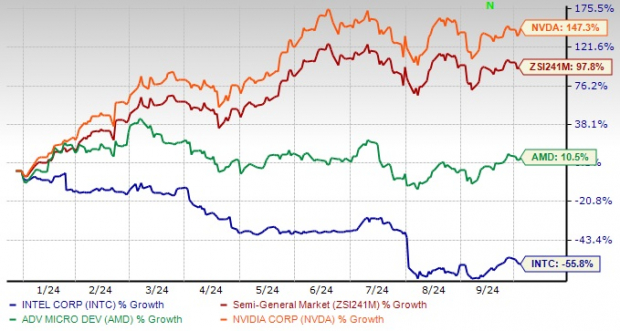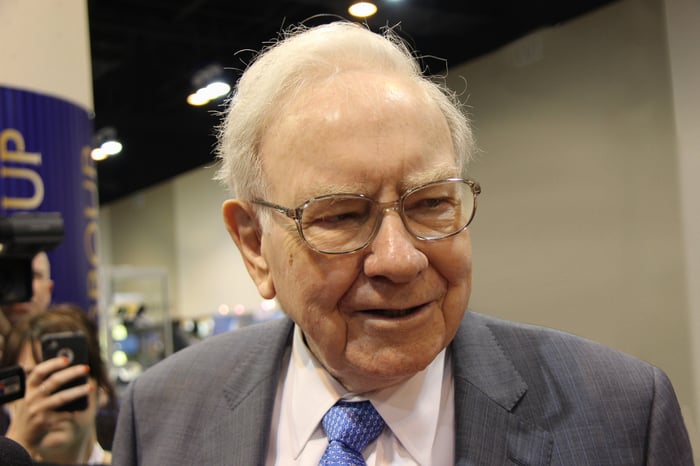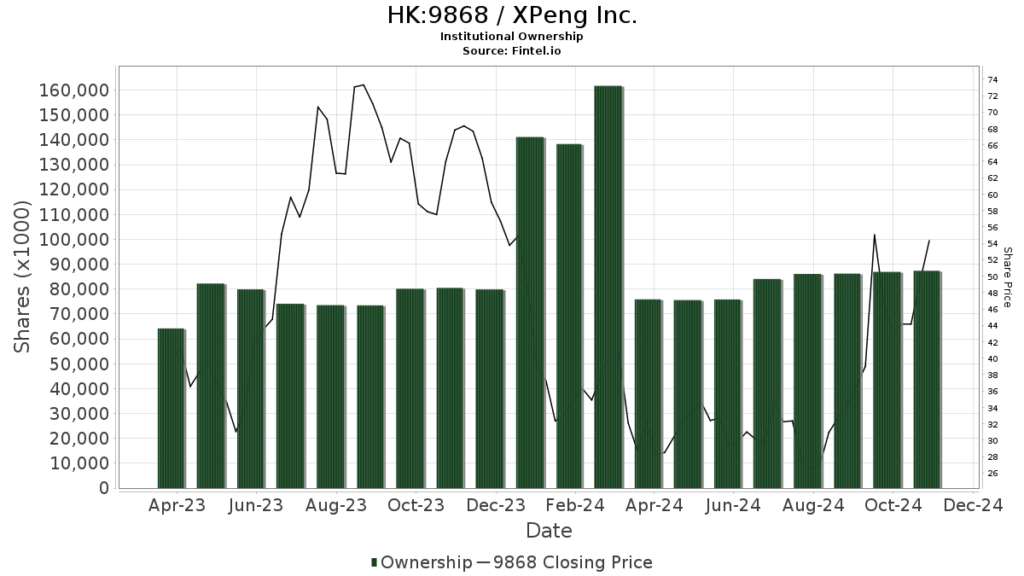Intel Corporation INTC has taken a nosedive, plummeting 55.8% year to date, while the industry has soared by 97.8%, leaving Intel behind its competitors Advanced Micro Devices, Inc. and NVIDIA Corporation. The company is grappling with severe financial woes and operational hurdles, leading management to embark on a thorough review of its operations.
Intel is exploring various avenues, including potentially splitting its product design and manufacturing sectors and assessing which factory projects to axe. Additionally, it intends to establish Intel Foundry as a standalone subsidiary to unlock strategic advantages and enhance capital efficiency by creating a clearer divide and independence from the rest of Intel. In the last reported quarter, this division suffered an operating loss of $2.8 billion.
INTC Struggles with Margins
Intel is broadening its reach in artificial intelligence to edge devices and PCs with its Core Ultra processors, supporting over 100 software vendors and 300 AI models. The Lunar Lake architecture, showcasing advanced graphics and AI capabilities, pledges significant performance enhancements and energy efficiency. Further, Intel’s advancements in next-gen products spanning enterprise AI, including the new Intel Xeon 6 processors and Intel Core Ultra client processors, cement its leadership in the AI domain.
The rollout of AI PCs for an early competitive edge has significantly impacted its short-term margins as Intel shifted production to its high-volume facility in Ireland, where wafer costs are typically higher. Margin woes were compounded by increased charges tied to non-core operations, unused capacity, and an unfavorable product mix. Competitors’ pricing pressures have further squeezed its profitability.
China Market Softness and Trade Tensions Add to INTC Woes
China, contributing over 27% of Intel’s total revenues in 2023, stands as its largest single market. However, China’s move to swap U.S.-made chips for domestic alternatives has dented Intel’s revenue outlook. Beijing’s directive to phase out foreign chips from critical telecom networks by 2027 underscores its efforts to reduce reliance on Western tech amid escalating U.S.-China tensions.
As Washington tightens tech export restrictions to China, Beijing accelerates its drive toward self-sufficiency in key industries. This transition poses a dual challenge for Intel, facing potential market restrictions and heightened competition from domestic chipmakers. The second-quarter of 2024 saw revenue setbacks due to license revocations for consumer-related exports to a Chinese customer.
INTC Estimate Revisions
Earnings estimates for Intel in 2024 have plummeted by 83.9% to 27 cents over the past year, while those for 2025 have slumped by 41.1% to $1.09. These downward revisions signal bearish sentiments for the stock.
Closing Thoughts
Intel’s innovative AI solutions offer great promise for the semiconductor landscape. By tackling scalability, performance, and interoperability challenges, Intel is paving the way for widespread enterprise AI adoption globally.
However, with a Zacks Rank #4 (Sell), it seems that Intel’s recent product launches may be too little, too late. Margin challenges in the face of strict export restrictions, an unfavorable product mix, and high customer inventory levels are weighing on its profits. With dwindling earnings estimates and lackluster price performance compared to peers, investor sentiment toward the stock is negative. Hence, it may not be a wise move to bet on Intel at present.
Market News and Data brought to you by Benzinga APIs




